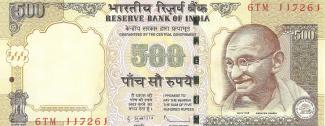This month, in an effort to fight corruption, India withdrew its two largest paper money denominations from circulation. Yale SOM’s Shyam Sunder lists some possible effects of the change.

The consequences of demonetization of higher denomination notes in India is largely a matter of speculation. Since most aspects of human behavior are intimately interlinked, every intervention sets off innumerable chains of reactions that create new reactions of their own. Since human ingenuity knows few bounds, these chains are extremely difficult to forecast. Yet, here is an attempt to do just that.
1. More bank accounts and fewer unbanked people: more business for banks, bank deposits and savings rate; lower returns on bank deposits, less business for bankers in informal sector; better tracking of transactions, greater difficulty of avoiding taxation and therefore higher tax compliance.
2. More white money payments for real estate and other large transactions: fewer places to hide black money; lower real estate prices; higher property and transactions tax collections; easier state government budget constraints; lower real estate transactions and property tax rates.
3. Lower demand for luxury goods and services: lower employment in retail sector; lower collection of import duties; lower mall rental rates; higher loan defaults on commercial real estate.
4. Greater frequency/volume of electronic transactions in labor and retail markets.
5. Lower contributions to political parties: reduction in total election expenses making it easier for less well-endowed and independent candidates to fight elections.
6. Lower corruption in civil service, business, and politics: fewer applicants for civil service jobs and party tickets during elections; higher valuation of merits in labor markets and of quality in markets for goods and services.
7. Drop in capitation fees of professional private educational institutions: closure of some medical and engineering school and drop in total admissions; some rise in average quality of education.
8. Temporary reduction in GDP due to missing retail activity during period of transition: some of these missing sales will not be made up in the later months.
9. Permanent increase in GDP due to more legal and open transactions and lowered transaction costs: also due to better decision making based on improved quality of socio-economic data.
10. Better business prospects of electronic payment systems and fin tech.
11. Increase in percentage of population paying income tax and decrease in income tax rates: also, a significant increase in the number of employees engaged in tax collection and audits.
12. Expansion of bank branches in unbanked locations.
13. Greater demand for electronic literacy and numeracy: for people seeking to protect themselves from fraud in the new electronic environment.
14. Greater demand for password protection and management software in India.
15. Centralized registry of real estate ownership.
16. Centralized registry of gold transactions.
17. Permanent reduction in GDP due to the missing “lubricant” of black money in the economy: this depends on the validity of the “lubricant” theory of corruption.
18. Increase in requests for advice on how India implemented demonetization. This largely procedural advice will be mostly ignored, and even when it is heeded, the consequences will be quite different because the element of surprise will be absent in its replications in other countries.
19. Clearer identification of leaders from politicians in opposition parties: backing of demonetization by opposition chief ministers such as Kumar (Bihar) and Patnaik (Odissa) is a good indication.
20. Increase in bank corruption cases: demonetization places on bank employees the onus of holding the line in face of lucrative offers to violate the bank rules.

